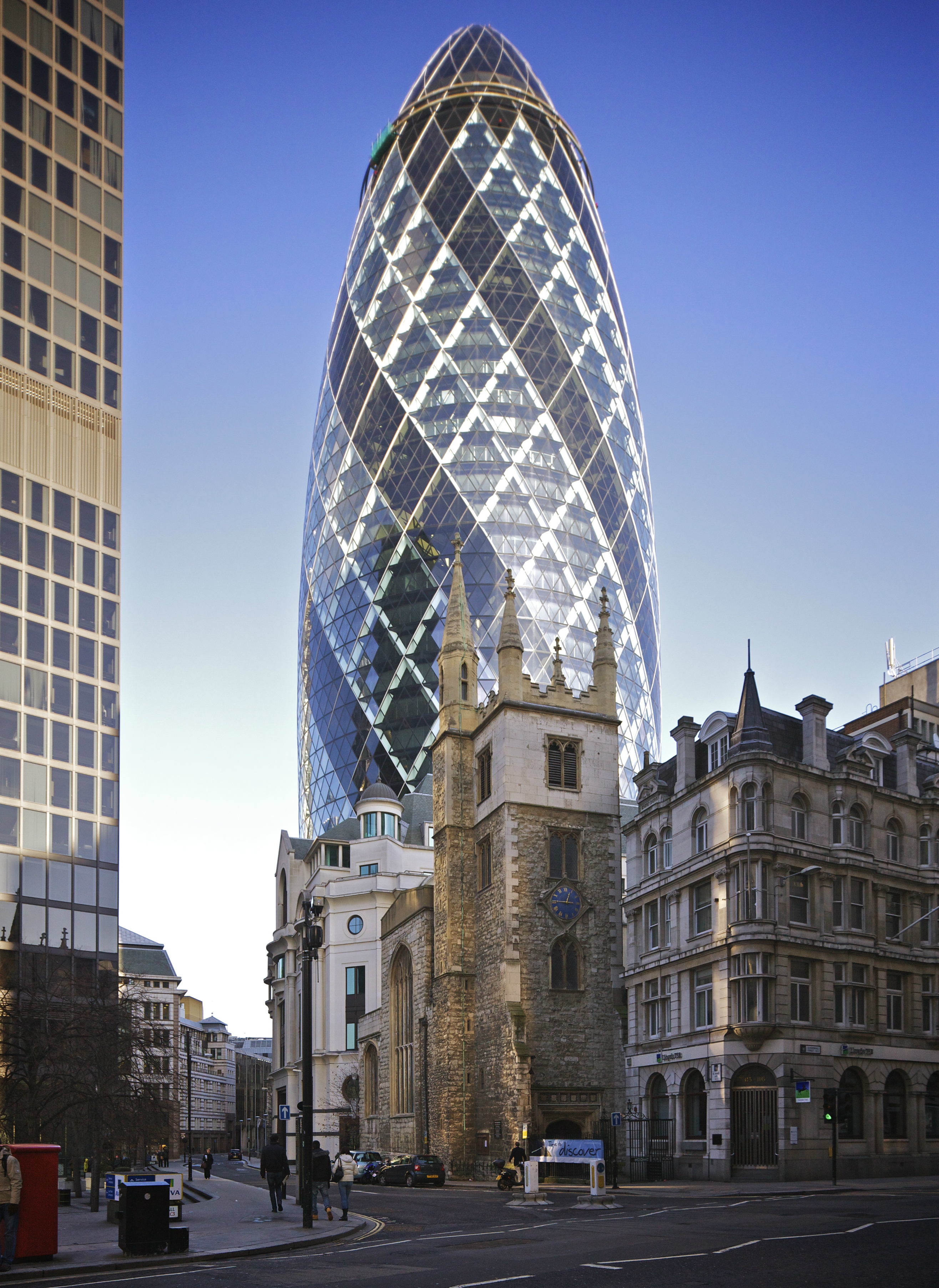St Mary Axe on:
[Wikipedia]
[Google]
[Amazon]
 St Mary Axe was a medieval parish in the
St Mary Axe was a medieval parish in the ''The Gentleman's Magazine'', Vol. 193 (1853), p. 49
/ref> The street St Mary Axe is now most notable for the
 St Mary Axe was a medieval parish in the
St Mary Axe was a medieval parish in the City of London
The City of London, also known as ''the City'', is a Ceremonial counties of England, ceremonial county and Districts of England, local government district with City status in the United Kingdom, city status in England. It is the Old town, his ...
whose name survives as that of the street which formerly occupied it. The Church of St Mary Axe was demolished in 1561 and its parish united with that of St Andrew Undershaft
St Andrew Undershaft is a Church of England church (building), church in the City of London, the historic nucleus and modern financial centre of London. It is located on St Mary Axe, within the Aldgate ward, and is a rare example of a City church ...
, which is situated on the corner of St Mary Axe and Leadenhall Street
__NOTOC__
Leadenhall Street () is a street in the City of London. It is about and links Cornhill, London, Cornhill in the west to Aldgate in the east. It was formerly the start of the A11 road (England), A11 road from London to Norwich, but th ...
. The site of the former church is now occupied by Fitzwilliam House, a fact acknowledged by a blue plaque
A blue plaque is a permanent sign installed in a public place in the United Kingdom, and certain other countries and territories, to commemorate a link between that location and a famous person, event, or former building on the site, serving a ...
on the building's façade. Nearby parishes include the medieval Great St Helen's (1210) and St Ethelburga (14th century).
The street name may derive from a combination of the church dedicated to the Virgin Mary
Mary was a first-century Jewish woman of Nazareth, the wife of Saint Joseph, Joseph and the mother of Jesus. She is an important figure of Christianity, venerated under titles of Mary, mother of Jesus, various titles such as Perpetual virginity ...
and a neighbouring tavern which prominently displayed a sign with an image of an axe
An axe (; sometimes spelled ax in American English; American and British English spelling differences#Miscellaneous spelling differences, see spelling differences) is an implement that has been used for thousands of years to shape, split, a ...
, or simply from the church name itself, which may have come from the axes used by the Worshipful Company of Skinners
The Worshipful Company of Skinners (also known as the Skinners' Company) is one of the Livery company, Great Twelve Livery Companies of the City of London. Originally formed as an association of those engaged in the Skinner (profession), trade ...
, who were patrons. The sign of an axe is reported to have been present over the east end of the church./ref> The street St Mary Axe is now most notable for the
Baltic Exchange
The Baltic Exchange (incorporated as The Baltic Exchange Limited) is a Trade association, membership organisation for the Maritime transport, maritime industry, and Shipping markets, freight market information provider for the trading and settl ...
at No. 38, and The Gherkin
30 St Mary Axe, previously known as the Swiss Re Building, is a commercial skyscraper in London's primary financial district, the City of London. Its nickname, The Gherkin, is due to its resemblance to gherkin, the vegetable. It was completed ...
at No. 30, a distinctively shaped skyscraper built on the site of the former buildings of the Baltic Exchange
The Baltic Exchange (incorporated as The Baltic Exchange Limited) is a Trade association, membership organisation for the Maritime transport, maritime industry, and Shipping markets, freight market information provider for the trading and settl ...
and the UK Chamber of Shipping (destroyed by an IRA bomb in 1992). The street originates at its northern end as a turn off Houndsditch, with traffic flowing one-way southbound, and it originates at its southern end as a turn off Leadenhall Street, with traffic flowing one-way northbound. Both one-way portions of St Mary Axe converge at Bevis Marks, where traffic is forced westward into Camomile Street.
''Number 70 St Mary Axe'' appears in several novels by the British author Tom Holt as the address of a firm of sorcerers headed by J. W. Wells. This is itself a reference to Gilbert and Sullivan
Gilbert and Sullivan refers to the Victorian-era theatrical partnership of the dramatist W. S. Gilbert (1836–1911) and the composer Arthur Sullivan (1842–1900) and to the works they jointly created. The two men collaborated on fourteen com ...
's ''The Sorcerer
''The Sorcerer'' is a two-act comic opera, with a libretto by W. S. Gilbert and music by Arthur Sullivan. It was the British duo's third operatic Gilbert and Sullivan, collaboration. The plot of ''The Sorcerer'' is based on a Christmas stor ...
''. In the song "My Name Is John Wellington Wells", the lyric renders his address as "Number Seventy, Simmery Axe"; this reflects the fact that some Londoners pronounce the street's name as "S'M'ry Axe" rather than enunciating it fully. The Tom Holt novels and ''The Sorcerer'' were written before the current office building at 70 St Mary Axe was constructed.
References
*Ann Saunders, ''The Art and Architecture of London: An Illustrated Guide'' (Oxford: Phaidon, 1984), 80. {{coord, 51.5144, -0.0810, display=title, region:GB_scale:2000 Streets in the City of London History of local government in London (pre-1855) Former buildings and structures in the City of London